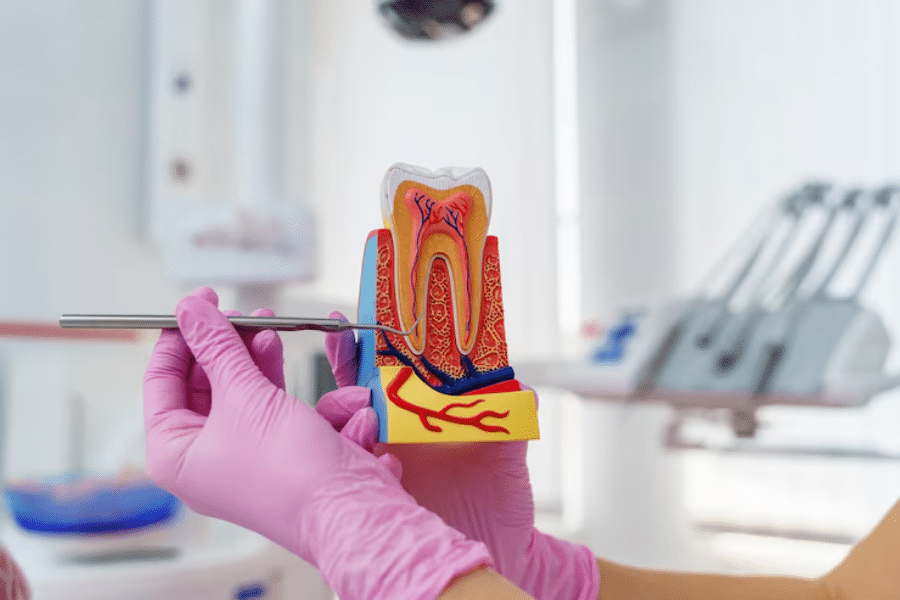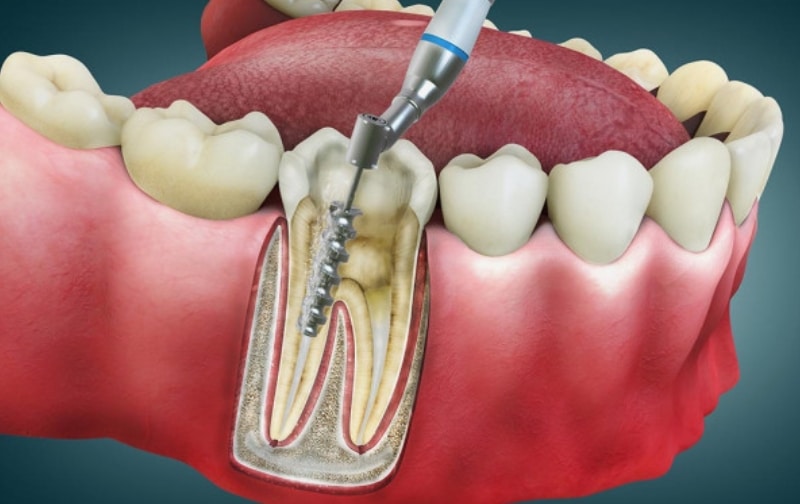
The decision to undergo a root canal is usually fueled by the desire to alleviate excruciating toothaches and salvage a natural tooth. However, the journey doesn’t end with the completion of the procedure; it’s merely the beginning of a crucial phase – the post-treatment period. In the wake of a root canal, questions naturally arise, and chief among them is the query that often lingers in the minds of patients: “Should you brush your teeth after a root canal?” Navigating the delicate balance between nurturing the healing process and sustaining optimal oral hygiene can be perplexing. In this comprehensive guide, we unravel the mysteries surrounding post-root canal care, exploring the intricacies of brushing, rinsing, and maintaining a healthy smile that stands the test of time.
Understanding the Root Canal Procedure
Before we delve into the nuances of post-treatment care, let’s illuminate the intricacies of the root canal procedure itself. Picture the inner sanctum of your tooth – a realm known as the pulp, housing nerves, blood vessels, and connective tissues. It’s here that infections, damage, or inflammation can wreak havoc, causing excruciating pain and jeopardizing the survival of the tooth.
A root canal procedure is not the ominous journey it’s often painted to be. Instead, it’s a meticulous and often life-saving intervention orchestrated by dental professionals. The process commences with the administration of local anaesthesia, ensuring you are comfortably numb throughout the procedure. Once the stage is set, your dentist creates a small access point to reach the pulp chamber. Understanding the root canal procedure is pivotal in appreciating the subsequent care required. It’s not merely a dental intervention; it’s a strategic manoeuvre to salvage your natural tooth and preserve the integrity of your oral landscape.
The Initial Period: A Delicate Phase
As you emerge from the dentist’s chair, the echoes of the root canal procedure still resonate, and you find yourself at the threshold of a crucial juncture – the initial period of post-root canal care. This phase is akin to the recovery after a surgical procedure, where the body, or in this case, the treated tooth, requires gentle nurturing to facilitate a seamless recovery.
Why Avoid Vigorous Brushing?
In the first 24 hours post-root canal, the treated tooth and its surroundings are in a state of transition. It’s a delicate phase marked by heightened sensitivity and the need for the healing process to unfold without disruptions. Vigorous brushing, during this nascent period, can unwittingly become an adversary rather than an ally.
Sensitivity: The recently treated tooth may be sensitive, and robust brushing could amplify this sensitivity, leading to discomfort and potentially impeding the early stages of healing.
Healing Tissues: Just as a wound requires time to mend, the tissues surrounding the treated tooth need a grace period. Aggressive brushing might disturb the delicate dance of cellular repair, hindering the seamless integration of the tooth into its revitalized state.
The First 24 Hours: What to Expect
During this critical window, the guidance of your dentist becomes paramount. It’s common practice to abstain from immediate brushing after the root canal procedure. Instead, consider the following recommendations:
Avoid Brushing Immediately: Allow the treated tooth the courtesy of a 24-hour hiatus from your regular brushing routine. This brief respite grants the tooth the opportunity to settle into its rejuvenated state without external interference.
Rinse with Saltwater: Embrace the soothing properties of warm saltwater rinses. Gently swishing a saltwater solution in your mouth can serve as a mild antiseptic, keeping the treated area clean and fostering a conducive environment for healing.
Pain Management: It’s not uncommon to experience some discomfort during the initial phase. Over-the-counter pain relievers, as recommended by your dentist, can be instrumental in managing any post-procedural soreness.
When Can You Resume Brushing?
After the initial 24 hours, a new chapter in your post-root canal care unfolds – the gradual reintroduction of brushing into your oral hygiene routine. This transition is not only a symbolic reclamation of your customary dental habits but a strategic manoeuvre guided by the principles of care and consideration for the recently treated tooth.
Use a Soft-Bristled Toothbrush
As you contemplate the prospect of brushing after a root canal, consider making a subtle yet impactful shift in your choice of toothbrush. Opt for a toothbrush adorned with soft bristles. The gentleness of soft bristles minimizes the risk of irritation and damage to the treated tooth, allowing you to resume your oral care routine without compromising the delicate healing process.
Gentle Brushing Technique
The resumption of brushing is not a call for vigour but an invitation to practice a gentle and deliberate brushing technique. Focus on each tooth, including the treated one, employing circular or back-and-forth motions. This measured approach ensures thorough cleaning without subjecting the treated tooth to unnecessary stress. Consider this phase as a recalibration of your brushing habits – a chance to embrace a more mindful and deliberate approach that aligns with the nuances of post-root canal oral care.
Long-Term Oral Care After a Root Canal
Regular Dental Check-ups
The cornerstone of sustained oral health post-root canal lies in regular dental check-ups. These routine visits provide your dentist with the opportunity to monitor the health of the treated tooth, identify any potential issues, and intervene proactively if needed. Regular check-ups are not just a formality; they are the frontline defence against complications and the assurance that your revitalized tooth remains in optimal condition.
Flossing
The act of flossing transcends being a mere supplement to brushing; it is an indispensable component of long-term oral care. Proper flossing ensures that the spaces between teeth, including those adjacent to the treated tooth, remain free from plaque and debris. By incorporating flossing into your daily routine, you minimize the risk of potential issues and contribute to the overall health of your gums.
Avoiding Hard Foods
Conscious choices in your dietary habits play a pivotal role in the sustained well-being of a tooth post-root canal. Be mindful of the foods you consume, especially in the days following the procedure. Steer clear of hard or crunchy foods that may exert undue pressure on the treated tooth. While the treated tooth is fortified, it is wise to avoid subjecting it to unnecessary challenges. Opt for a diet that is considerate of the recent dental intervention, allowing the tooth to settle into its revitalized state without undue stress.
A root canal represents a pivotal chapter, a juncture where pain gives way to relief and a path to preserving a natural tooth unfolds. As we draw the curtains on our exploration of whether to brush your teeth after a root canal, it becomes evident that this journey is not merely a routine dental procedure but a commitment to the enduring vitality of your smile. The initial 24 hours post-root canal are delicate, akin to the gentle unfurling of a bud, and as the days unfold, so does the necessity for a thoughtful and committed oral care routine.
The soft hum of a soft-bristled toothbrush becomes a companion, guiding the way to healing without compromising the integrity of the treated tooth. So, as you embark on this post-root canal odyssey, remember that each brushstroke is a stroke of care, each rinse is a pledge to healing, and your radiant smile is the masterpiece that emerges from this delicate symphony of oral care. May your teeth continue to sparkle, and your smile illuminate the world – a testament to the artistry of post-root canal oral hygiene.


